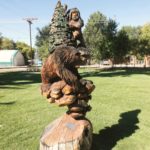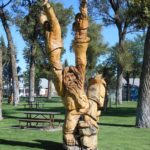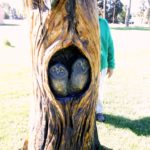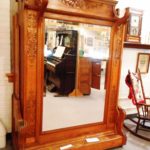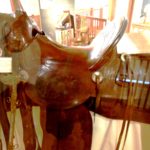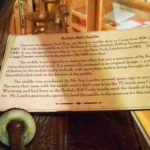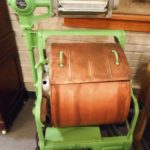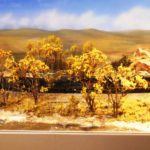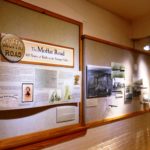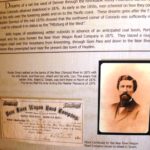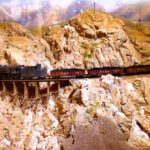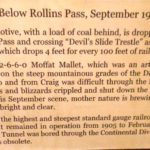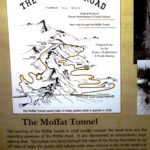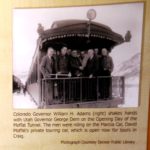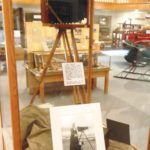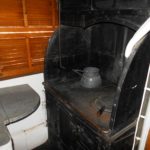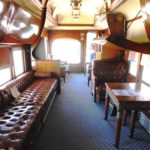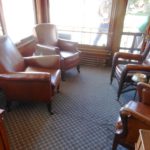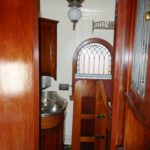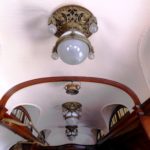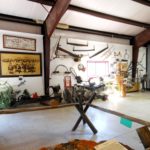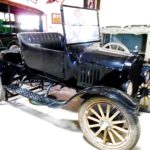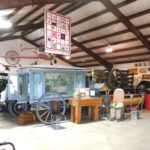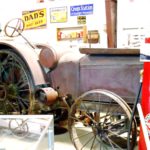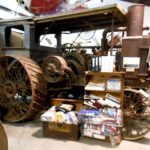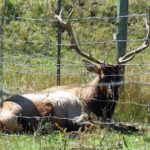Our next stop was scheduled to be Longmont, Colorado. It is the home of Wiland Direct, a database marketing company. I worked for Phil Wiland’s previous company, Wiland Services, for many years, running the operation in Fredericksburg, VA and traveling frequently to the home office near Longmont. Phil, entrepreneur extraordinaire, was the best boss I ever had. And this year, he was the best basket customer I’ve ever had. You can find more details under the “Nantucket Lightship Baskets section of this website.
It was my plan to deliver about half of his order and, at the same time, reunite with many friends who are still part of the Wiland family. But Nature intervened. The entire area was beset by torrential rains and disastrous flooding. There was literally no route by which we could get to Longmont without road closures. If we got there, we’d be taking a campsite that a local displaced family needed.
So we punted. Our next mandatory destination was Custer State Park in South Dakota later in the month. Pairing Google Maps with several campground guides, we identified a route through Craig, Colorado, then through lower Wyoming into South Dakota.
As often as I’d been in Colorado, I’d never mapped it very well. We were headed for Steamboat Springs and not that far north of Vail and Breckenridge. Obviously I’m not a skier. But it’s nice to understand where these places are after all these years!
As suggested in the headline, the town of Craig was pure Americana. Our campground was empty, expensive and weird, but the town offered lots more than we expected in a “whistle stop.” The city park in the heart of town was the palette for folks who specialized in chain saw carving in its dead trees. Back in 2000, Dave Pike, director of tourism for the county, came up with an idea to deal with the 20 dying cottonwoods in the city park. He invites some artists to a Whittle the Wood Rendezvous. The event has continued; carvers come from all over to participate.
- Carvers’ Works
- Carvers’ Works
- Carvers’ Works
Across the street is the Museum of Northwest Colorado. Housed in a 90 year old armory, it’s essentially a cowboy museum. But is also spends a lot of time and space on the Moffat Railroad, which terminated in Craig. The railroad was built for two reasons: the abundance of coal and oil taken from the rich landscape, and David Moffat’s Dream.
David Moffat was a New Yorker who went west, young man. He quickly switched from retailing to banking and then struck it really rich by mining precious metals. He built railroads to his various claims, but his ultimate dream was a more direct route from Denver to Salt Lake City and thence to the coast by connecting to the transcontinental railroad. Construction began in 1904, and the route crossed the Continental Divide at Rollins Pass, an elevation of 11,600 feet, the highest standard gauge railroad ever built. To climb to this height, the route involved many switchbacks, but it still required a 4% climb and became cost prohibitive to operate in winter’s snows.
Moffat’s plan for the road included a 6.5 mile tunnel to eliminate the ascent. Other railroad barons, uneasy about competition, frequently thwarted him. He went through his own fortune and died in 1911 while in New York seeking additional funding. At that time, the road stopped in Steamboat Springs. Two years later, it was extended to Craig, and fifteen years later — 1928 – the Moffat Tunnel was inaugurated.
- Local Handiwork
- Who’s Am I ? (See next picture.)
- Answer to the “Saddle Riddle.”
- Early Electric-Powered Washer
- Train Motif
- History of the Moffat Road
- Bear River Wagon Road – the Predecessor Route
- (Number 215″ (See story at right.)
- The Moffat Tunnel Necessity
- “Marcia” at the Opening of the Moffat Tunnel (Story below.)
- See the Wallihans’ story below.
Moffat built a private railroad car, christened “Marcia” after his only child, and used it to inspect his roads and to entertain potential investors. His expectations were doomed, in large part because Harriman and Gould felt threatened by his “intrusion” into their enterprise and thwarted his efforts. The car was purchased by the city of Craig in 1953 for $1; many thousands have been expended to restore it to pristine condition. The interior features exotic woods, servant quarters for two, sleeping accommodations for up to twelve, and an extensive package of utilities.
- David Moffat’s Private Car, “Marcia.”
- Galley
- Seating and Working Area
- Salon
- “Rest Room”
- Exquisite Detail Throughout
The picture of the camera display (last in the large gallery above) was a focal point of an exhibit of the work of Augusta and A.G Wallihan, among the earliest big-game wildlife photographers in the country. A.G., an avid hunter, taught his wife to become a crack shot in her own right. When traveling missionaries passed through the area, the couple traded a pair of buckskin gloves for the camera they carried. Unschooled in its use, they taught themselves and then took on the challenges of lugging around the heavy equipment and getting clear “shots” with the required long exposures of the day. There work was not only published in newspapers country-wide but at the Paris World Exposition (1900) and the St. Louis World’s Fair (1904). Letters and articles they wrote placed them in the vanguard of the wildlife conservation movement, with other visionaries like Theodore Roosevelt and George Bird Grinnell.
Craig held yet another surprise, the Wyman Museum. Bill Wyman was a local who started collecting “things” in 1949 when he picked up a neglected 1932 Lincoln for fifteen bucks. In 2006, the family opened the Museum on part of their former elk ranch to display the treasure trove of Americana that would make Mike and Frank (TV’s American Pickers) drool.
And there’s an extra drawing card. To the delight of all, especially the children, Clyde, a domesticated elk, was a fixture at the Wyman Museum until his death at 18 in 2010. After a two year mourning period, the Wymans obtained his successor, Junior, from an elk ranch near Grand Junction.
Craig was a great and welcome surprise. Any stop that serves to add another chapter of the development of this Great Land is awe-inspiring.

